Tuesday, December 20, 2011
Juniper Bonsai
Saturday, December 3, 2011
Crash Bandicoot 4: The Wrath of Cortex - Part 11 - Banzai Bonsai - 1st Visit - Broken Boxes Gem
!#99# Crash Bandicoot 4: The Wrath of Cortex - Part 11 - Banzai Bonsai - 1st Visit - Broken Boxes Gem
Philips Frx Free Shipping Used Recliner Lift Chairs Price Boise Corn Maze
Friday, November 18, 2011
A Bonsai Primer
!#99# A Bonsai Primer
Thursday, November 3, 2011
A Guide to Indoor Bonsai Trees
!#99# A Guide to Indoor Bonsai Trees
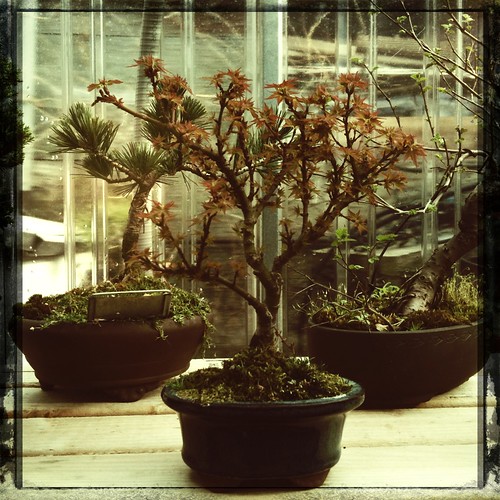
Bonsai tree can really be a wonderful thing and definitely something unique to have in your house if you can take proper care of it. These miniature trees resemble a piece of landscaping which has been trimmed down in size. While some prefer to keep it outside, others choose to nurture indoor bonsai trees. Having an indoor bonsai in not something new, it has been in practice for many years. However, since many bonsai trees are outdoor plants, growing them inside the house definitely will require some real hard work, especially for beginners.
Types of indoor bonsai trees
There are many types of indoor bonsai trees; like Hawaiian Umbrella Trees, which are preferred by amateurs as they are simple to care for and can live in low-to-high lighting conditions. The beautiful Golf Ball Umbrella Bonsai is also a trouble-free bonsai. Baby Jade Bonsai also known as the Elephant Bush comes with thick trunk and thick water-filled leaves. Flowering White Jasmine Bonsai favoring light, a good fertilizer as well as humidity is an excellent indoor plant. Having resemblance to the Weeping Willow Tree, the Willow Leaf Ficus Bonsai requires minimal care. If you are a beginner in this field, it is recommended that you go for fukien tea, bougainvillea, serissa, bush cherry, aralias and sago palms.
How to take proper care of indoor bonsai trees
Indoor bonsai trees require proper care for keeping the plant healthy, beautiful and miniature in the coming years. The proper growth of bonsai trees depend upon a lot a factors and the first in the queue is its placement in the winter and summer months. During the summer months, the night temperature generally does not dip below 40 degrees, making it ideal for placing the plant outside the house. When kept outside, make sure that you have positioned it in a place where it will be able to receive sufficient sun. Afternoon shade is good for the bonsai.
In the winter months, the night temperature dips below 40 degree and it is advisable that you do not keep the plant outside; this must be done slowly over a period of weeks. For the first time when you keep the plant inside, keep it for few hours, and then gradually increase the time till it becomes acquainted with the new environment. Both east and west exposure and 4 to 6 hours of sunlight a day is good for the growth of a bonsai.
During the winter months, it is recommended that indoor bonsais are kept in a shallow tray filled with gravel and water, which will help in providing extra moisture around the tree. Since most of the original indoor bonsai trees undergo their training period, you will only need to trim and pinch its miniature.
Trimming and pinching is required to maintain the miniature growth of the plant. You need to pinch and trim back the new growth to the farthest safe point. However, make sure that a little should be left for sustaining the health of the plant. Indoor bonsai trees grow at different rates making it necessary for evaluating the rate of growth of each tree as well as adjust the trimming and pinching for accommodating it.
Repotting is essential for the proper growth and maintenance of bonsais; it should be done occasionally when the root system of the plant has filled the pot. Repotting is required for supplying fresh soil, encourage a more compact root system for the plant. However, remember trees grow at different rates; you should first examine the root system of the tree each year for knowing if it has become pot-bound.
Fertilizing plays an important role in the growth of the plant; it keeps the bonsai healthy as well as beautiful. You will need to replenish the supply of nutrients of the soil occasionally with the help of the fertilizers which are available at the garden centers. Fertilizers should be applied once in a month, except during winters.
How to buy the right indoor bonsai tree?
You can buy an indoor bonsai from any garden store. However, selecting an indoor bonsai is not an easy task, as you need to know if the variety will suit the setting of the place. If your budget is tight and you are going for the cheaper ones, do remember that you will have to spend more time and effort for its proper growing. Indoor bonsai trees are not the tropical types like the outdoor bonsai trees.
Pyrex Custard Cups Fast Garmin Gps Streetpilot Best Quality Microdermabrasion Vs Chemical Peel Buy Now
Monday, October 24, 2011
Beautiful Bonsai Trees, Indoor, Outdoor, and Juniper
!#99# Beautiful Bonsai Trees, Indoor, Outdoor, and Juniper
The Five Best Bonsai Gift Trees
!#99# The Five Best Bonsai Gift Trees

If you've ever been stuck for an original gift idea for that hard-to-buy-for-person on your list, (and who hasn't?) consider a bonsai. As a gift, a bonsai is a peerless example of a gift with lasting appeal. It is a gift with history. It is a piece of art. It is the gateway to a lifelong hobby. A bonsai is an all-natural, ecologically friendly gift. A bonsai is alive. And maybe best of all, every single bonsai is unique to start with and will become more so as the years go by. While some bonsai are valued at thousands of dollars, it's not difficult to find many impressive gift trees from specialized greenhouses or online for less than a hundred dollars.
Many people think that you need the emerald green thumb voodoo gift to keep a bonsai alive and that isn't the case. Now, there are some trees that are rare and incredibly valuable and difficult to care for. Some trees require a considerable amount of attention and expertise and if you're living in a cold climate, preparing an outdoor tree for the winter can be a challenge. But there are also many, many bonsai types that are easy to care for. For the uninitiated, an easy to care for bonsai that will survive inside during the winter like any other "houseplant" is probably the best place to start. All you need to know for sure, if you're buying a bonsai as a gift, is that your friend has somewhere to put it where it will get bright light. A big south or west facing window is, in my opinion, a necessity.
So, here is my list of the top 5 bonsai gift trees for beginners,
1. Juniper
2. Schefflera Arboricola
3. Ficus
4. Mini or Dwarf Jade - Portulacaria
5. Fukien Tea
Juniper - The most popular bonsai in North America is the Juniper and if you buy one as a gift, unless you're buying it for someone who already has a lot of bonsai, you need to stick with Juniper Procumbens. This is a specific type of Juniper that is ideally suited to bonsai, very easy to grow and can be brought indoors. There are some Junipers - for example the Chinese Juniper - Juniper chinensis- which cannot be brought inside, so don't be fooled.
Schefflera Arboricola - Whether you realize it or not, you've seen this tree as a houseplant, or in a restaurant or office. Commonly known as the dwarf umbrella tree, this small version of the very popular houseplant is an interesting and easy to care for bonsai. Unlike the Juniper, this bonsai doesn't look all that Japanese, but it does look very tropical- almost jungle like and any friend you have, particularly one who likes houseplants, will be thrilled with this unique exotic version.
Ficus - There are many different types of Ficus, more recognizably known as Figs. My favorite as a bonsai gift is the Tiger bark Fig, because it's easy to grow, with a very interesting trunk shape and bark and - well - it looks like a bonsai. Other well known fig bonsai that make good gifts are the Benjamina and the Ginseng Fig (especially good for friends with a taste for the unusual). As a first bonsai gift I should warn you that both the Green Island and the Narrow Leaf Figs are a little trickier to grow. The one thing that everyone should know about figs is that they tend to drop leaves when they're stressed and they can be stressed very easily. However, they will grow back! Don't give up.
Mini Jade/ Dwarf Jade - This is my personal favorite bonsai gift for people who have never grown a bonsai before. The correct name is Portulacaria afra and it's a South African native, but since so many are familiar with Jade trees as houseplants, the Mini Jade or Dwarf Jade is probably a better name. Here's another bonsai that will drop its leaves if it gets too stressed, but again they easily grow back and this might very well be the number one easy-to-grow bonsai. Mini jades - like their full sized namesake are also very attractive in an exotic and quite unique way. Their rounded, very fleshy leaves look like something a dinosaur would have hidden behind, although in the case the mini jade it would be a very small one. While you cannot ever let any bonsai completely dry out, I've found jades to be among the more forgiving of little watering slip-ups. That alone would qualify them for this list, but you'll find that with their tiny leaves and remarkably tree-like appearance for something so small, the mini jade bonsai makes an outstanding gift bonsai.
Fukien Tea - I add this tree to the list of great gift bonsai because as far as tropical trees are concerned, Fukien Tea (sometimes called Fujian Tea) is among the classic bonsai. It needs to be kept warm and never allowed to dry out and for some reason it is very attractive to insect pests. But with its tiny-perfect, shiny, dark green leaves, white flowers and red berries, this tree is a bonsai for bonsai lovers. For anyone who treasures the classics - in anything - this is a gift they will never forget.
I said Five Bonsai, so I have to stop there, which is a shame because already I want to add in the Chinese Elm and the Zelkova and the Sweet Plum and then move to the slightly more advanced "winter outside" group of bonsai, but where you live strongly influences just how difficult an outdoor wintering tree can be. But with this list, you're off to a spectacular head start on the gift list to end all gift lists!
Growing Orange Trees from Pips
!#99# Growing Orange Trees from Pips
The Shape of a Bonsai Tree
!#99# The Shape of a Bonsai Tree
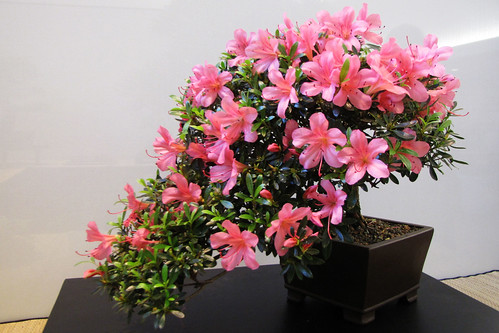
One of the main characteristics of a bonsai tree is the shape of it. A bonsai tree can take on a special art form with its unique style and shape. Each person will have their own option of how they choose to shape their bonsai tree as it grows. A bonsai tree can be shaped in many interesting ways including popular forms such as literati, formal and informal upright, slanting, forest and cascading. There are other styles of trees that you can try once you learn the basics. Literati style is known to be the most common shape of a bonsai tree. It has a bare trunk with very little branches. The branches of this style are close to the top of the tree and the bottom of the tree has a twisted shape. The formal and informal upright style offers a different shape. These styles are another common approach to bonsai shaping. They have a tapered trunk in a straight upright position. The informal style of this tree has bends and curves in the tree unlike the formal shape that makes it different looking.
The slanting shape of the bonsai tree is like the formal upright shape because of its straight trunk. The difference in the slanting bonsai tree is that the trunk has a slant going one way or the other near the base of the tree. The forest style of the bonsai tree is created by placing several bonsai trees in one area or container. This is an advanced style of bonsai gardening. You can have bonsai trees of different heights with this style to give the grouping a special affect. Most people use around three trees in a container to make the shape of a forest.
One of the most appealing shapes of the bonsai tree is the cascade form. This shape resembles the trees in the mountains or over bodies of water. They look very attractive shaped in the cascade style. These are some of the most used styles and shapes of the bonsai tree. There are other styles to try if you prefer something out of the norm. Starting out with a common style is a good idea if you are doing this for the first time to understand better how it is done. When you successfully master the common styles of these bonsai you can move on to try other styles.
Upright Hatanaka hollywood Juniper
!#99# Upright Hatanaka hollywood Juniper
How To Grow And Maintain A Bonsai Tree
!#99# How To Grow And Maintain A Bonsai Tree
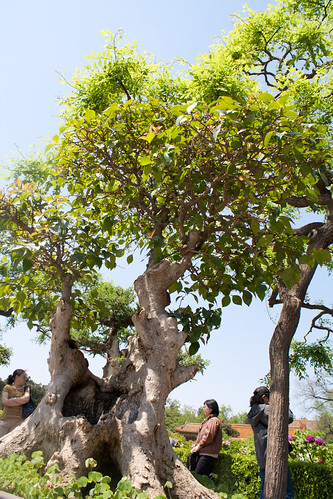
Shaping and dwarfing are accomplished through a few basic but precise techniques. The small size of the tree and the dwarfing of foliage are maintained through a consistent regimen of pruning of both the leaves and the roots. Various methods must be employed, as each species of tree exhibits different budding behavior. Additionally, some pruning must be done seasonally, as most trees require a dormancy period and do not grow roots or leaves at that time; improper pruning can weaken or kill the tree.
Most species suitable for bonsai can be shaped by wiring. Copper or aluminum wire is wrapped around branches and trunks, holding the branch in place until it eventually lignifies and maintains the desired shape (at which point the wire should be removed). Some species do not lignify strongly, or are already too stiff/brittle to be shaped and are not conducive to wiring, in which case shaping must be accomplished primarily through pruning.
To simulate age and maturity in a bonsai, deadwood features called "jin" and "shari" can be used to good effect with coniferous bonsai, especially: "jin" is created by removing the bark from an entire branch to create a snag of deadwood, while "shari" involves stripping bark from areas of the trunk, simulating natural scarring by limbs being torn free. Care must be taken when employing these techniques, because these areas are prone to infection, and removal of too much bark will result in losing all growth above that area. Also bark must never be removed in a complete ring around the trunk as it contains the phloem and will cut off all nutrient flow above that ring.
Watering
Because of limited space in the confines of a bonsai pot, bonsai care can be quite difficult. The shallow containers limit the expanse of the root system and make proper watering practically an art in itself. While some species can handle periods of relative dryness, others require near-constant moisture. Watering too frequently or allowing the soil to remain soggy can promote fungal infections and "root rot". Sun, heat and wind exposure can quickly dry a bonsai tree to the point of drought, so the soil moisture should be monitored daily and water given copiously when needed. The soil should not be allowed to become "bone dry" even for brief periods. The foliage of some plants cultivated for bonsai, including the common Juniper, do not display signs of drying and damage until long after the damage is done, and may even appear green and healthy despite having an entirely dead root system.
Bonsai should not be allowed to become waterlogged, as this may lead to root rot. Neither should the soil be allowed to dry too completely before rehydration. Watering techniques vary, with some growers preferring to water with a fine rose on a watering can or hose, while others immerse their trees in a water-filled basin to the height of the container lip.
Repotting
Bonsai are generally repotted and root-pored around springtime just before they break dormancy. Bonsai are generally repotted every two years while in development, and less often as they become more mature. This prevents them from becoming pot-bound and encourages the growth of new feeder roots, allowing the tree to absorb moisture more efficiently.
Wiring
Bonsai wiring is one of the most powerful tools to control the shape of the tree. The best time to wire a tree is in spring or fall when there is not as much foliage and the tree will not be too stiff. (Trees become stiff in winter while dormant because the sap pressure of the trunk and branches is much lower.)
To wire the tree, wrap the trunk. Then wrap each branch in spirals of bonsai wire so that the branch may be bent. The tree will then train the branch to grow in the desired direction. Another method of wiring involves attaching weights to the branches, causing them to sag and creating the impression of age.
Generally, wire is left on for one growing season. The tree should not be allowed to outgrow the wire, since this could cause the bark to become bound to the wire, making removal traumatic. When the time comes to remove the wire, it should be cut away in small pieces (rather than winding it off) as this will cause less damage to the foliage.
The thickness of the wire used should be in proportion to the size of the branch larger branches will require lower gauge wire. Two pieces of thinner wire paired together can be used in lieu of heavier wire. It is bad form to let any wires cross; this is most readily accomplished by starting from the base of trunk and working up.
When bending the branches, one should listen and feel for any sign of splitting. When bending a branch near the trunk extra caution should be used, as the branch is generally most brittle near the trunk. It is possible to gradually bend a branch little by little over the course of several months.
When working with the branches, consideration should be given to the style desired.
Tools
Special tools are available for the maintenance of bonsai. The most common tool is the concave cutter, a tool designed to prune flush, without leaving a stub. Other tools include branch bending jacks, wire pliers and shears of different proportions for performing detail and rough shaping. Anodized aluminum or copper wire is used to shape branches and hold them until they take a set.
Fertilization and soil
Opinions about soil mixes and fertilization vary widely among practitioners. Some promote the use of organic fertilizers to augment an essentially inorganic soil mix, while others will use chemical fertilizers freely. Bonsai soils are constructed to optimize drainage [3]. Bonsai soil is primarily a loose, fast-draining mix of components, often a base mixture of coarse sand or gravel, fired clay pellets or expanded shale combined with an organic component such as peat or bark. In Japan, volcanic soils based on clay (akadama, or "red ball" soil, and kanuma, a type of yellow pumice) are preferred.
Containers
Every bonsai pot is equipped with drainage holes to enable the excess water to drain out. Each hole is typically covered with a plastic screen or mesh to prevent soil from escaping. Containers come in a variety of shapes and colors (glazed or unglazed). The ones with straight sides and sharp corners are generally better suited to formally presented plants, while oval or round containers might be used for plants with informal shapes. Most evergreen bonsai are placed in unglazed pots while deciduous trees are planted in glazed pots. It is important that the color of the pot compliments the tree. Bonsai pots are produced all over the world, some are higher quality than others and some are highly collectable such as ancient Chinese or Japanese pots made in highly touted regions with experienced pot makers such as Tokoname, Japan. However, highly collectable pots are not just confined to Asia, European Artists such as Byran Albright and Gordon Duffett produce unique pots which Bonsai artists collect.
Pre-Bonsai materials are often placed in "growing boxes" which are made from scraps of fence board or wood slats. These large boxes allow the roots to grow more freely and increase the vigor of the tree. The second stage after using a grow box is to plant the tree in a "training box" this is often smaller and helps to create a smaller dense root mass which can be more easily moved into a final presentation pot.
Location
Contrary to popular belief, bonsai are not suited for indoor culture, and if kept indoors will most likely die. While certain tropical plants (Ficus, Schefflera, etc.) may flourish indoors, most bonsai are developed from species of shrubs or trees that are adapted to temperate climates (conifers, maples, larch, etc) and require a period of dormancy. Most trees require several hours of direct or slightly filtered sun every day.
Overwintering
Some trees require protection from the elements in winter and the techniques used will depend on how well the tree is adapted to the climate. During overwintering, temperate species are allowed to enter dormancy but care must be taken with deciduous plants to prevent them from breaking dormancy too early. In-ground cold frames, unheated garages, porches, and the like are commonly used, or by mulching the plant in its container up to the depth of the first branch or burying them with the root system below the frost line.
Mallsai
Inexpensive bonsai trees often sold in chain stores and gift shops are derisively referred to as "mallsai" by experienced bonsai growers, and are usually weak or dead trees by the time they are sold. Often these bonsai are mass produced and are rooted in thick clay from a field in China. This clay is very detrimental to the bonsai, as it literally suffocates the roots and promotes root-rot. Very little if any shaping is done on mallsai, and often the foliage is crudely pruned with little finesse to resemble a tree. Due to the conditions under which they are transported and sold, they are often inadequately watered and are kept in poor soil, usually a clump of sphagnum moss or the aforementioned clay with a layer of gravel glued to the top, which leaves them susceptible to both drying and fungal infections. Some "mallsai" can be resuscitated with proper care and immediate repotting, although this is reportedly rare. This top layer of glued-on gravel should be immediately removed once the bonsai is purchased, and the plant should be repotted in a good bonsai soil such as akadama.
Collecting
Bonsai may be developed from material obtained at the local garden center, or from suitable materials collected from the wild or urban landscape. Some regions have plant material that is known for its suitability in form - for example the California Juniper and Sierra Juniper found in the American West, and Bald Cypress found in the swamps of Louisiana and Florida.
Collected trees are highly prized and often exhibit the characteristics of age when they are first harvested from nature. Great care must be taken when collecting, as it is very easy to damage the tree's root system (often irreparably) by digging it up. Potential material must be analyzed carefully to determine whether it can be removed safely. Trees with a shallow or partially exposed root system are ideal candidates for extraction. There is a legal aspect to removing trees, so the enthusiast should take all steps necessary to ensure permission from the owner of the land before attempting to harvest. If not, consider the right of the plant to stay where it is undisturbed.
BONSAI NEW EASY METHOD # 185 MING BONSAI MADE FROM OUTDOOR PLANT
!#99# BONSAI NEW EASY METHOD # 185 MING BONSAI MADE FROM OUTDOOR PLANT
Some Information About a Mango Bonsai Tree
!#99# Some Information About a Mango Bonsai Tree
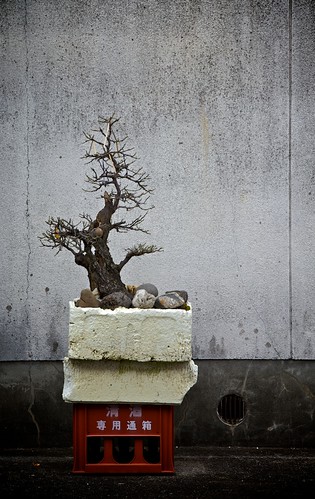
Cultivating a mango bonsai plant is not an quick point to do but it may be performed. You would truly have to sacrifice the fruit for this expertise simply because no bonsai plant can hold up the mango when it's total grown. A mango bonsai tree does not necessarily need to be the usual bonsai that is just up to 3 feet tall. Many people who develop mango bonsai have them growing as much as six to eight feet tall. Thinking about the height of full grown healthy trees inside numerous plantations all over the tropical world, these are modest.
Many people recommend having the dwarf range of mango trees in the event you wish to have a smaller sized mango tree in comparison to the ones that develop up to a number of meters high. The issue with these dwarf mango plants is that they're still rather substantial when in comparison with traditional bonsai trees, that are just an typical of a number of feet. These dwarf mango trees are around eight feet high at ten years old and can currently bear flowers and fruits. In spite of these limitations, there are numerous effective bonsai trees that are mango.
Mango bonsai will not have any fruit when you don't wish to possess your tree labored by the heavy fruit. Mango fruits might weight heavily on a little bonsai mainly because these can have numerous fruits. The leaves of the mango bonsai are also not so appropriate for the smaller sized assortment of bonsai mainly because they are quite huge and elongated. Your mango bonsai will nevertheless must be larger and taller than your common bonsai in case you succeed in cultivating one.
The simplest method to cultivate a mango bonsai is via getting seedling from nurseries. Growing from a seed may take a extended time because these trees take extended to reach maturity. A lot of bonsai experts recommend continuous pruning and trimming to maintain the size in the mango tree without touching or changing anything in the roots. The most you can do while using bonsai roots is just to confine this in a modest pot to discourage full growth.
Some experts around the other hand, do recommend doing precisely as you do with other bonsai trees for a profitable mango bonsai plant. They just suggest continual pruning with the leaves and branches to preserve the appropriate proportions and to discourage the development of flowers and fruits which can break off some branches of the mango bonsai.
How To Germinate Japanese Maple Tree Seeds
!#99# How To Germinate Japanese Maple Tree Seeds
How to Trim a Bonsai Tree
!#99# How to Trim a Bonsai Tree
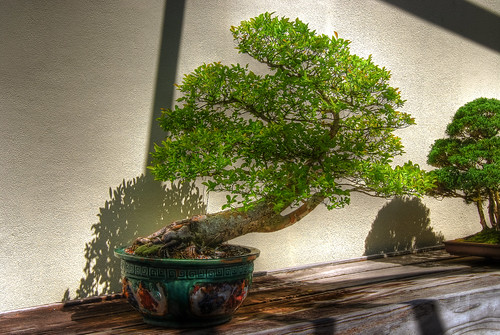
The art of trimming a bonsai tree is not an easy task. You must be able to visualize how it should be done and how it will look afterwards. Usually if it's your first tree, the best thing to do is have a shrub or a small tree. Some examples of small trees would be boxwood and camellia. You also need to have patience, because this work is a masterpiece in the making.
You can start trimming the bonsai tree sitting in the container. Take away some of the branches until you have a clear view of the trunk of the plant. From there, you will be able to make a decision on what angle you want the tree to be displayed. Keep most of the foliage on the bonsai tree.
Transfer the bonsai tree from the original container to the new container. If the root ball takes up more space than you have in the second container, put the tree in water. Continue to do this until a certain amount of the soil is no longer attached to the roots. You will have to trim about a third or more of the roots until the tree fits in the container.
After the bonsai tree has been planted in the container, add soil and fertilizer. The soil mixture should be packed into the container. Make sure that it is firmly packed and not loose. In addition to that, you should place a screen inside the container. This will help a lot of the solid to stay put instead of draining away from the container while you're watering the tree.
Pruners have sharp edges on both blades. The blades are used to trim the bonsai tree. You need to trim the tree as frequent as possible. Doing this helps to keep the shape of the tree that you chose. If it is not kept up, then the tree will lose its shape.
In order for the branches to grow in the direction you want, use training wire. You would attach the wire to the branches that are already there. Then you could either pull them up or down as needed.
When the bonsai tree gets new growth, allow it to grow out and create a shape for it. If you are constantly trimming the new growth, you will have a bonsai tree with just a lot of branches and a trunk for people to look at. That doesn't look very appealing. Allow the tree to grow naturally and more foliage will grow out. This way, you can see how the tree looks before you trim it again.
Midnight Brown - 28 Hours a Day
!#99# Midnight Brown - 28 Hours a Day
Paige and Kelsey Show- Destroyed Lunch
!#99# Paige and Kelsey Show- Destroyed Lunch
Bonsai Pots
!#99# Bonsai Pots
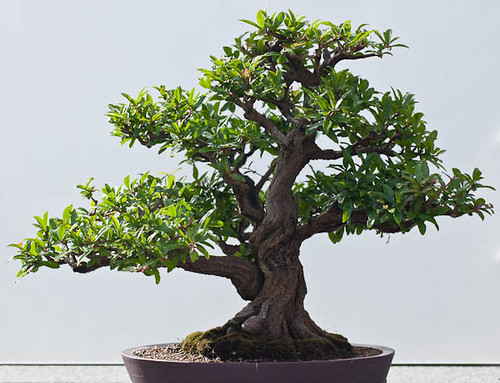
As we all know growing up a bonsai is an art, the focus is not only the main product in this case plant but also the surrounding which makes the central thing look even better. You should remember that pot is not only a frame of a bonsai it is part of the whole thing.
There are many types of bonsai pots. The most usual ones are ceramic bonsai pots and mica bonsai pots, they can be found in many shapes: rectangular, oval, rounded, octagon, dished and probably the best looking separated water-land pot. The best pots are all hand made and are made by the ancient Chinese standards. When you are choosing the right color for your pot you should also be aware of the fact that the color of leafs changes and so does the visual connection between pot and the tree.
So what looks good in summer months may not look appealing in winter months. Usual width or diameter of a pot should be similar to the area that is taken by the branches. This does not totally apply to water-land pots where pots should be wider. Water-land pots are the most unusual but probably the best looking ones. These pots are divided in the middle and on the one side filled with soil and on the other with water.
The good thing beside looking really good is that water part of the pot will provide extra humidity which can be really good for some species, not so much for the others. You should also always be careful when you are supplying water, because if water part of the pot is overfilled it may spill to soil, causing it to be wet, which may also not be good for a bonsai.
Beautiful Artificial Bonsai Trees
!#99# Beautiful Artificial Bonsai Trees
Caring For The Indoor Bonsai Tree
!#99# Caring For The Indoor Bonsai Tree
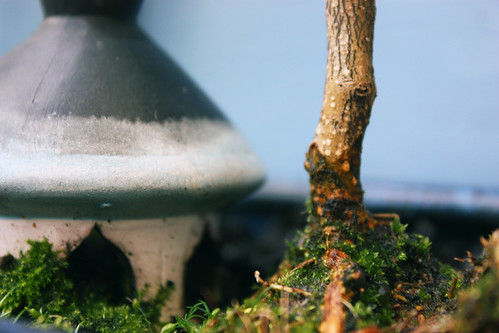
The indoor Bonsai Tree is a beautiful addition to any home or office, and once you learn how to care for these unique trees, they are a great hobby.
Indoor Bonsai Trees are actually a miniature replica of a natural outdoor tree. The cultivation of these first began in China and Japan centuries ago, but today growing the Bonsai Tree has become a popular hobby in many parts of the world.
One of the best aspects is that it only becomes more beautiful with time with the right care. The indoor Bonsai Tree must receive enough sunlight without being exposed to temperatures that are too high or too low. If you live in a fairly mild climate you may want to place your tree on a patio or porch when temperatures permit.
If you live in a climate that reaches extreme temperatures, you may have to place your Bonsai Tree in a room that receives plenty of light, but not right next to the window.
Watering your indoor Bonsai is another important element to properly caring for it. Your tree should be watered when the soil begins to appear dry, and it is very important that you never let the soil get too dry.
Using the proper soil for the type tree that you have is also an essential element to caring for your tree. Always ensure that you have the right soil when planting or replanting your tree.
The correct use of liquid fertilizer may also determine how healthy your tree will be. To guarantee that you are using the right fertilizer and applying it correctly, seek advice for the type of tree that you have.
For the indoor Bonsai Tree to grow properly, it is extremely important that you trim it at the appropriate times. Tropical and sub tropical indoor bonsai trees have to be trimmed throughout the year. Not only do the branches need to be trimmed but also the roots. Nevertheless, as different plants grow at diverse rates, you will have to assess your tree's growth and change the trimming accordingly.
With proper care, your indoor Bonsai Tree can grow to be beautiful and healthy. Once you get the hang of caring for your Bonsai Tree, you may even want to add several more to your collection.
CANNABIS BONSAI sensimillia marijuana bulb WEEK1 beginning 52 canicule 10 INCHES TALL 100%ORGANIC
!#99# CANNABIS BONSAI sensimillia marijuana bulb WEEK1 beginning 52 canicule 10 INCHES TALL 100%ORGANIC
Best Way to Grow a Bonsai Ficus Ginseng
!#99# Best Way to Grow a Bonsai Ficus Ginseng
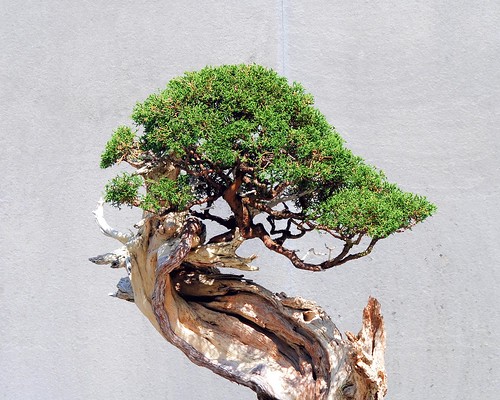
One of the most special types of plants that you have the power to try to grow by yourself is the Bonsai tree. These are tiny sized trees that can be produced in small pots. They may be rather tough to produce and care for if you have never done it before.
There are numerous different forms of Bonsai trees that you are able to pick out to develop - but none is more beautiful then the Bonsai ficus ginseng. In its normal habitat this tree is rather big and one of the more gorgeous you will ever come across. What makes this so unusual is its root system. They are commonly open and beneath a huge trunk. This is perfect for trying to grow it in smaller form.
You are able to develop this particular form of tree in both low light environments as well as ones that are well lit and get natural sunlight. They will need a good amount of water in order to stay properly hydrated. During the summer time they will call for a good deal more - but a little less during the winter months. Do not be distressed if you water it too much every so often. This can happen and the tree conforms well when it does.
If you are a tolerant gardener then you will appreciate the time it needs to grow. It is a bit slower then many plants. However, this might also depend upon the environments in which you are developing it in. You will have to re-pot the tree every year or at times every two years. The soil needs to be healthy - but besides that it is able to grow in almost anything.
This is one of the best trees to develop because it does not call for your attention every minute of the day. The hardest process of taking care of it is when it comes time to trim it. The leaves on this tree will need to be trimmed in order to keep the crown looking well groomed and balanced for the tree. Every six leaves that grow three need to be removed. Ensure that you have the necessary Bonsai tools to get the job done properly.
BONSAI NEW EASY METHOD #87-FIG TREE (AND VELVET ANT CAMEO)
!#99# BONSAI NEW EASY METHOD #87-FIG TREE (AND VELVET ANT CAMEO)
Beginner Bonsai Trees
!#99# Beginner Bonsai Trees
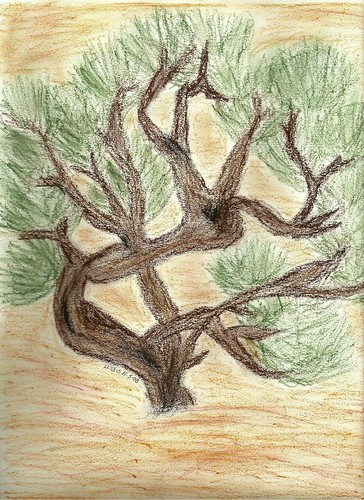
The art of Bonsai has taken much momentum as a hobby among many people. Beginner bonsai trees need to be selected with much care. All these need to be looked after very easily without putting many efforts. The art of bonsai is very complex and it will take many years to learn. But do not worry, as beginner the hobby is much challenging and will give you good exercise and pleasure. There are many species which will grow without much of our attention. Nut surely one has to the vigilant about the variety of necessity activities to be done. They include watering, pruning, feeding and re-potting. No body can neglect these.
It is always better for you to have your idea of the bonsai trees in your mind, and it is far better if you sketch it in a paper how you want to look like your beginner bonsai. Then accordingly you can make stem and root pruning as the days go by. One important thing to be noticed is that bonsai will take long period to take the shape you desire. So make sure that you are putting only short term goals as a beginner.
For beginner bonsai trees, there are different varieties which are very hardy and does not require much attention or which can survive in any light conditions. So it is advisable to select one of such bonsai tree to begin with. Let us see some of the varieties which can be grown in your home with very less effort.
Azalea is one type of bonsai which will bear beautiful flowers and brighten the environment. Stems are very hard and roots will give very artistic look. Two types of Azalea are found in the nurseries, they are kurume Azalea and satkuzi Azalea. They are relatively cheap.
Another cute but marvelous bonsai tree is cherry blossom. This has the feature of growing any where, outdoor or indoor. They are very beautiful and they can withstand any climatic conditions.
Japanese Maple are spectacular bonsai which has long leaves with colors gold to red. This bonsai is not a flowering bonsai, but it can accommodate itself in any environment and looks very elegant.
Karate kid is another species of Bonsai. It is also known as Juniper. This plant is widely available and it requires only less feeding and watering. It is a good for indoor bonsai.
Beginner bonsai trees have to be careful with the maintenance of the bonsai. There are many tools available for the proper nurturing of the Bonsai trees. Some tools are really helpful, particularly for a Bonsai beginner, but it's imperative to realize that it is not possible to make a master within a short time. One can keep on enjoying with the bonsai hobby if he really likes it
Bonsai Channel - Wire and Wiring
!#99# Bonsai Channel - Wire and Wiring
The Ideal Bonsai Tree: The Dwarf Pomegranate
!#99# The Ideal Bonsai Tree: The Dwarf Pomegranate
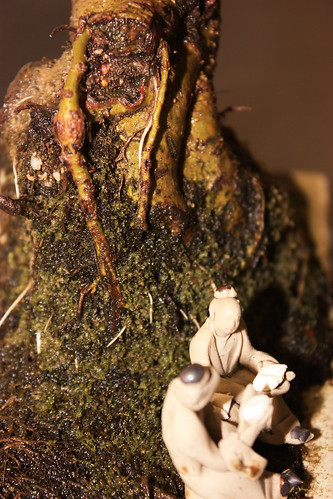
People who love bonsai trees will love the dwarf pomegranate tree! The dwarf pomegranate tree has beautiful flowers and fruit. However, the fruit of the dwarf pomegranate tree is quite small when compared to a normal pomegranate. The dwarf pomegranate tree's flowers are yellow-orange in color and trumpet shaped; its fruit is a spherical red; and its leaves are dark green marbled with shades of bronze. The trunk of the dwarf pomegranate is naturally twisted. Overall, the dwarf pomegranate is a lush and gorgeous bonsai!
The dwarf pomegranate can be easily propagated from the thick branches of a parent plant. The dwarf pomegranate thrives in hot, sunny conditions, but needs to be kept a bit damp at all times. The only exception to this is just before mid-season, when shadier and dryer conditions encourage flowering of the dwarf pomegranate tree.
Sunlight is critical to the dwarf pomegranate tree. It is also rather delicate and frost or drying winds will kill this tree. Because the dwarf pomegranate is a Mediterranean tree, it flourishes in warm environments. If you live in an area with a cold climate, a greenhouse is the perfect place to grow the dwarf pomegranate tree. The tree flowers well when planted in a deeper-than-usual pot because a shallow pot will not accommodate the root system. The branches of the dwarf pomegranate tree can be brittle, so care should be taken.
On the whole, the dwarf pomegranate is the perfect bonsai tree. It is easily trained to almost all bonsai styles: forest, cascade, literati, tree on rock, windswept, twin trunk, root over rock, twisting trunk, informal upright, etc. A gorgeous bonsai, the dwarf pomegranate is in every aspect a full pomegranate tree, in miniature.
Sculpting an olive-tree: alive in my bonsai-class
!#99# Sculpting an olive-tree: alive in my bonsai-class
Bonsai Tree Sculpture #27 by Jim Shull
!#99# Bonsai Tree Sculpture #27 by Jim Shull
How to Take Care of Bonsai Trees
!#99# How to Take Care of Bonsai Trees
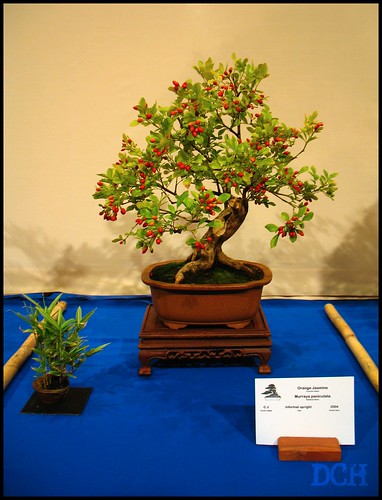
In this modern era, bonsai trees are used to decorate empty corner of the house. They add charm to the interior of a house. Many people want to decorate their house with this tree but they back off just because they don't know how to take care of bonsai tree. Well, the answer is simple, you have to consider few things and implement the guidelines as given to you.
Some of the major aspects which must be considered by you are soil, watering, pruning and shaping.
Soil
One of the biggest considerations in maintaining your bonsai is soil. Watering, transpiration, rooting and feeding of bonsai depends upon the quality of the soil. You should fertilize your bonsai with a water-soluble fertilizer at least once per month during the growing season. Apply fertilizer on wet soil. Selection of fertilizer depends upon the species of bonsai tree.
Watering
In order to take good care of bonsai tree, you must understand the importance of watering. Water is essential for every living organism. Most bonsai tree die due to dehydration. Lack of watering causes dehydration. So, watering is required for maintaining your bonsai tree. The most confusing question which arises in the mind of many people regarding watering is how often they water their bonsai trees. It's so simple; water your tree when you see the soil is drying out. Remember, over-watering is harmful for the tree.
Pruning
In pruning, two types of pruning are considered, branch pruning and root pruning. Spring is the most suitable season for branch pruning. You must remove the excess branches. As the time goes by, the tree becomes root bound. The roots must also be pruned properly. You must re-pot your bonsai tree after every two or three years.
Shaping
To grow bonsai into an art form you must know about bonsai tree wiring. It is an advanced skill which cannot be performed by everyone easily. For controlling the direction of the branches, only desirable branches are wired. Wiring can give you a desirable shape if done correctly but it can also damage the whole tree if it is done incorrectly.
Conclusion
After going through above mentioned information, you must have a clear idea about how to take care of bonsai tree. All the above mentioned information might seem a lot but they are effective and result oriented. By following the above mentioned tips you will assure yourself a healthy and attractive bonsai tree in some corner of your house which will add more attraction towards the decoration of your house.
How to Bonsai - Basic Wiring Technique
!#99# How to Bonsai - Basic Wiring Technique
Indoor Bonsai
!#99# Indoor Bonsai

Trees that are used for bonsai are very different in their needs, and each tree reacts to indoor conditions differently. When we say that Bonsai is grown up indoor that means that it is grown outside of its usual location. For example: a tree from cold area would have a lot of troubles to adapt to conditions in warm area that is why we would need to create artificial conditions that would suit that tree. A lot of trees can grow better in good artificial conditions but all of them have special needs that have to be maintained for a tree to stay in good health.
Many great gardeners grow their bonsai inside. For example a lot of different types of pines can easily be grown up inside and will survive without a problem because they can tolerate slight change of condition as difference in lighting, temperature, pressure and others. A lot of people try to make special indoor circumstances and use different technique to make their bonsai adapt to new environment as good as possible. That is why some people have special rooms with refrigerators or heating devices and machines that can regulate the moisture in the air. Growing bonsai indoor will force you to create as natural environment as possible that is why you will need to create seasons which are essential for a tree to survive. The best position for a room with bonsai is the one that has a window facing east, because an open window will give bonsai full spectrum of light which will mimic the natural circumstances.
Some people think that growing bonsai indoor is not really the best thing, some trees like Buddhist pines and Chinese elms show the exact opposite while these trees can adapt to indoor climate easily if they are given enough time to acclimatize.
Sago Palm Tree Behemoth
!#99# Sago Palm Tree Behemoth
Chinese Elm Tree
!#99# Chinese Elm Tree

Native to Japan, Korea and China, Chinese elm tree is a member of the elm family and is widely used for street landscaping in nearly all countries in the world. The size of Chinese elm tree is usually pretty large, and it can grow up to 18 meters in height with a huge tree crown which is almost the same size as its height. This tree normally forks very early when it grows, thus resulting in a saddle shape in its appearance.
The leaves of Chinese elm trees often have a tooth-like shape with bright green colors, and its bark will fall of during the process of growth. Its bark has a lace-like appearance when it fully grows up. The leaves are dark green and shiny, with an unequal base. It normally flowers in the late spring and early summer.
Compared with other elm tree, Chinese elm trees has a distinctive hardy feature from the gardening perspective view. It can deal with lots of bad environmental situations such as city smogs, bad soil and lack of watering. Also, they are resistant or immune to many pests and diseases such as Dutch Elm Disease. Their hardiness help them to be part of the city landscaping in many countries. If you decide to grow one in your garden, it is a wise to prune them carefully when they mature. So, some care-taking is necessary for such a tree in your backyard.
If you are about to build a tidy yard for you family, Chinese elm trees might not be a good choice because its natural messy character. Although they are often used to decorate streets and highway medians, it fallen leaves will always be a problem for your pools, sideways and lawns. Their hardy root system may also tear up your sideways and roads.
How to Grow Bonsai Trees : How to Plant a Bonsai Tree
!#99# How to Grow Bonsai Trees : How to Plant a Bonsai Tree
Sunday, October 23, 2011
Bonsai Tree Meaning
!#99# Bonsai Tree Meaning

A lot of people wonder about the meaning behind the bonsai tree. Well, let's start with the meaning of the word itself. Bonsai, first of all, is a Japanese word and could be translated as 'a tree in a pot'. The art of bonsai growing, however, did not originate in Japan but in China. It started over a thousand years ago and at that time the trees were called 'pun-sai'. The art of pun-sai growing was called penjing.
It is believed that in those days, people were trying to create the trees that look like dragons, serpents, birds and other animals. All of these forms are deeply rooted in Chinese myths and legends.
Later on, when the Japanese learned of this new art form, the meaning changed as well. The Buddhist monks that brought bonsai growing to Japan viewed these trees as a symbol for harmony between nature, man and soul. With that, the form of the trees also changed. Gone were the bizarre and grotesque shapes of twisting serpents and fierce dragons. From then on the bonsai were all about harmony, peace and balance. They started to represent all that was good.
Buddhist monks had a great influence on the art and practice of bonsai growing that has never quite disappear. Even these days a lot of books that are dedicated to bonsai gardening and are published in the western world talk about meditation and zen. They will describe how growing a bonsai requires a meditative state and how all the pruning and cutting should be approached with a zen-like state of mind.
That being said, most of the bonsai tree meaning was lost to the general public in the last couple of decades. Most westerners now look on these trees as merely a decoration; a little touch of Asia to put in our homes. I'll leave it to you to decide if that's a good thing or not.
However, if you do become a bonsai artist and start growing your own trees, instead of just observing them or buying trees that someone else has made for you, you will find that taking care of bonsai still possessed a spiritual note. You will have to connect to the tree, understand it, see where it wants to grow and then gently direct it into the desired direction. You will have to find balance between what you want and what a tree is willing to give you. You will have to find patience inside of you and allow a tree to dictate how fast it wants to develop. And throughout all this process, you might discover something new inside of you. You might discover that indescribable thing that has captivated so many. With that, you just might find your own meaning of bonsai trees.